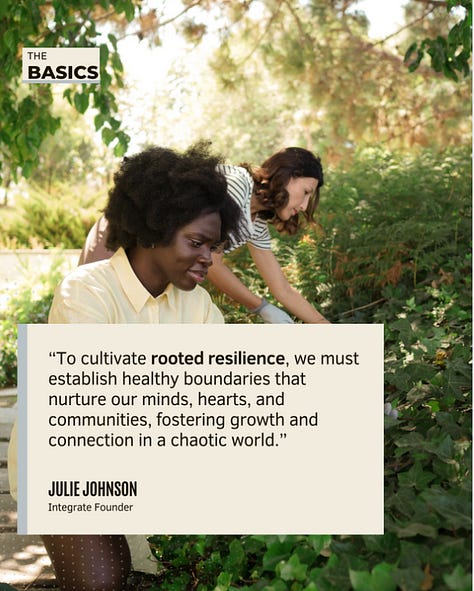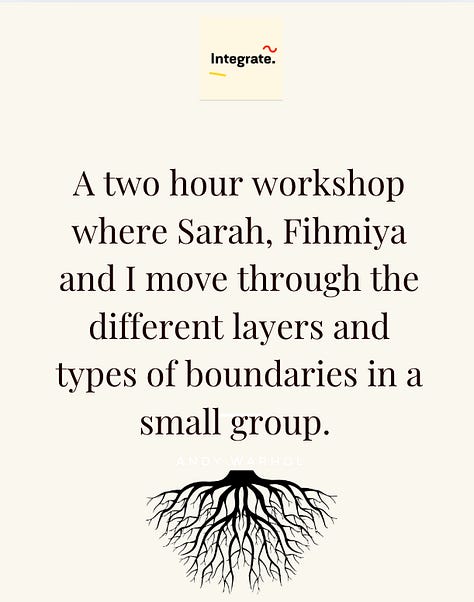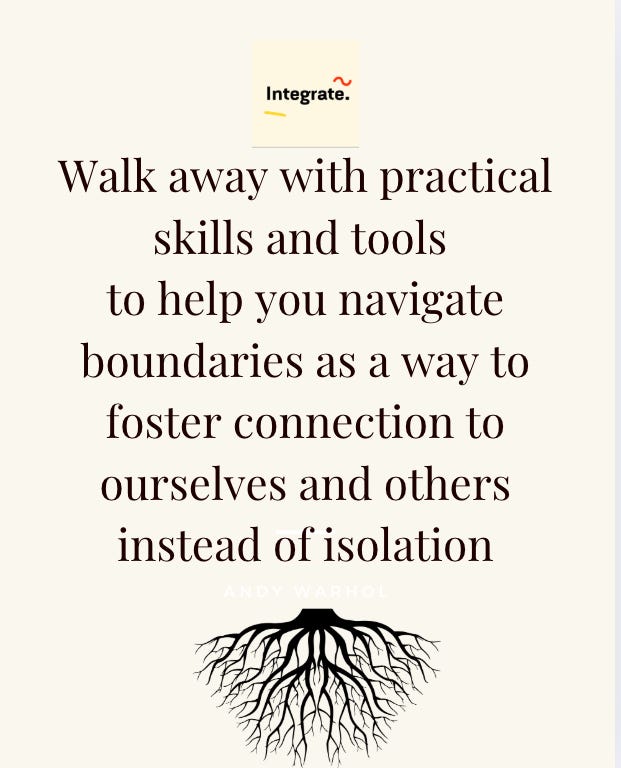Unpacking Empathy by Design: A Deep Dive into Embodied Boundaries
Hello, and welcome back! I can’t tell you how excited I am to share this space with you again. If you’ve been with us for a while, you know that Empathy by Design is more than just a podcast. It’s a deep conversation, a chance to reflect on what it means to build systems and spaces that truly center empathy and connection. And today, we’re talking about something that’s close to my heart because it has such a profound impact on how we live and connect with others: embodied boundaries.
This episode is part of the larger exploration we’ve been having about designing empathetic systems. When we say systems, we’re talking about everything from the technologies we use to the relationships we nurture, and even to how we connect with ourselves. What I love most about the conversations here is that they’re people-centered. We’renot not about chasing abstract ideas or agendas but about anchoring in real human experiences and needs. And this thread of embodied boundaries? It’s such a great example of how empathy starts with what we recognize and honor within ourselves.
What Are Embodied Boundaries?
Now, if the phrase “embodied boundaries” is new to you, don’t worry. It might sound like a theoretical concept. However, from my perspectiv, it is anything but that. Sarah O’Brien, one of our incredible guests and a licensed clinical social worker, brought such a clear and relatable perspective to this. She explained embodied boundaries as those physical, emotional, and mental edges that tell us what we’re capable of handling—in our bodies, in our conversations, and in our relationships.
Here’s the example she gave that I thought was just perfect. If you hurt your back and someone asked you to move a heavy piece of furniture, you probably wouldn’t hesitate to say, “Sorry, I can’t do that right now.” Physical limitations are often easier to spot and accept. But with emotional boundaries? That’s not always the case. They’re trickier to name, and for many of us, they come wrapped in guilt or fear of disappointing others.
What Sarah reminded me is that these emotional limits are just as valid as physical ones. A tough conversation, a high-pressure situation, or an emotionally draining interaction all push the boundaries of what we can manage. And when we respect those edges and communicate them clearly, we create space for healthier relationships—not just with others, but with ourselves too.
Understanding the Nervous System
Building on that, I brought up polyvagal theory, which has been such a game-changer for me personally. (If you’re new to this, don’t worry—I’ll walk you through the basicx in this episode and our upcoming workshop .) Polyvagal theory is all about understanding the state of our nervous system. Sometimes we’re in a freeze or shut-down mode, other times we’re hypervigilant and on high alert, and then there are moments where we feel connected, clear and steady. Knowing where we are at on that continuum is like having a map to help you understand what you need in any given moment.
In another part of of this beautiful idea of “social engagement,” which is about finding your way back to a place where you feel safe and steady in yourself. And here’s the connection to embodied boundaries—to really honor those boundaries, it’s often about pausing and giving yourself time to check-in with your nervous system to come back from that overwhelmed state. Saying “not right now” instead of forcing a “yes” or a “no” creates space to recalibrate and choose the moment when you’re ready to re-engage.
It’s something I’ve been practicing myself, and I’ll be honest, it’s a process. But every time I give myself that permission to pause, I notice how much better I feel and how much more connection I’m able to bring to the people in my life.
The Journey to Boundaries
And then there’s Fihmiya’s story. She talked about how boundaries weren’t always an intuitive thing for her. For a long time, they were this concept that felt foreign, like something she didn’t even know existed, much less how to apply. But as she started to understand how trauma influences the nervous system and began to practice trauma-informed principles in her life, something clicked.
She described boundaries as acts of care, not just for herself, but for the relationships she values most. And honestly, her reflection hit me hard because I know what that learning curve looks like. For so many of us, especially those of us with trauma histories, boundaries can feel like swinging between extremes. Either we’re letting everything in or shutting the world out entirely. But when you start to find that middle ground—that place of balance and care—it’s incredible what it does for your sense of safety and connection.
Creating Spaces Rooted in Empathy
Here’s what I’ve been sitting with since we recorded this episode: embodied boundaries aren’t just personal; they ripple outward. When we honor what we need, we make space for healthier, more empathetic interactions. Whether it’s in our relationships or our work, that practice of honoring boundaries creates a foundation that supports not just us, but the people we’re connected to.
And for me, that’s what Empathy by Design is all about. It’s about designing with people’s humanity in mind. Whether we’re building technology, forming policies, or simply figuring out how to better communicate, when empathy is at the center, it transforms everything.
My Takeaway
For me, this isn’t just a podcast episode. It’s a reminder to come home to myself—to trust those inner signals, to honor them even when it’s hard, and to trust that by doing so, I’m also making room for deeper connection. I hope that’s something you can take with you today too, and carry into the spaces you’re creating, whether they’re systems, relationships, or the way you care for yourself.
Thank you for being here and for exploring this with us. These conversations mean so much to me, and I’m so glad we get to have them together. See you next time!
Join Us For Rooted Resilience: A Workshop on Embodied Developing Embodied boundaries
Alright, y’all, we see you. It’s overwhelming out there right now, and we get it. But here’s the thing—this is a critical moment for the healers, creators, and designers among us to reconnect with their inner leader.
✅This work isn’t about striving for perfection or crossing a finish line. It’s a process, a practice, a journey.
➡️What if you could start to sense your body’s “hell yes’s” and “hello no’s” with clarity and confidence? What if you could define what feels supportive and acceptable to you—not just from your mind, but from your whole self?
➡️Rooted in Polyvagal theory, we’ll explore how your nervous system shapes your boundaries and influences your sense of safety. We’ll also unpack the role of attachment patterns and how they impact your ability to honor yourself and embody your inner leader.
➡️This is about uncovering what supports you, what aligns with your truth, and what allows you to show up fully—for yourself, your work, and your communities.
➡️Your leadership matters, now more than ever. It’s time to step into it with compassion, curiosity, and courage. You can go sign up for our workshop “Rooted Resilience: Embodied Boundaries for Mind, Heart and Community at the link in bio.






















Share this post